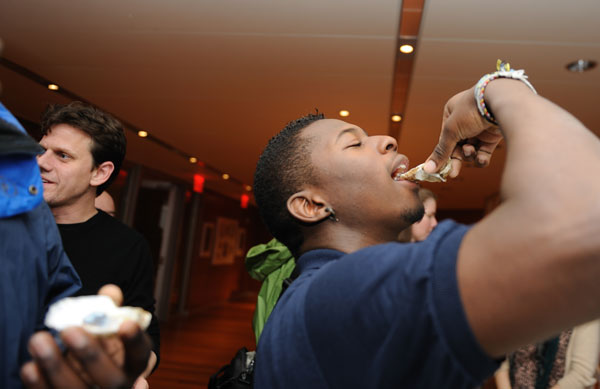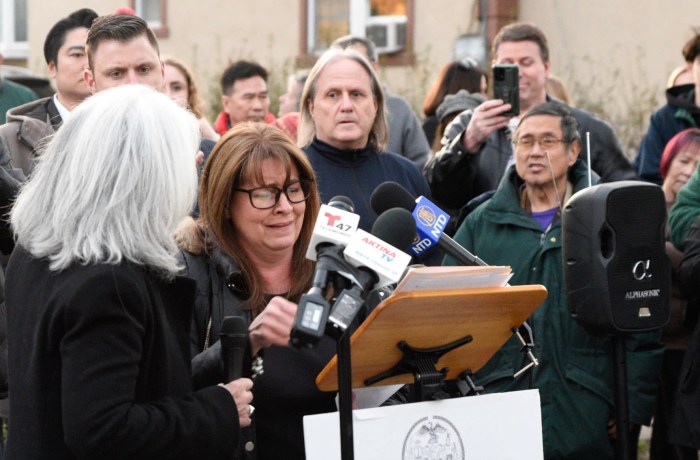 [/media-credit]
[/media-credit]
On April 26, a presentation at the New York Academy of Sciences entitled, “Can Oysters Save New York Harbor?” explored what happened to the harbor, what’s happening now to restore it and the role oysters can play in its rehabilitation. Students from the New York Harbor School on Governors Island joined four expert panelists to explain the life cycle of an oyster and relate it to the life of today’s harbor.
The New York Harbor School, a small, public high school, opened in 2003 and has been working with oysters since its inception. Since 2009, oyster aquaculture has become even more prominent in the curriculum, according to the students. The students have been seeding oysters in five reefs — three in deep water and two in shallow water.
Oysters are keystone species, the students explained to the New York Academy of Sciences audience. They have a disproportionately positive effect on the harbor ecosystem, because they filter water and provide habitats for a variety of fish and invertebrates. An adult oyster can filter and cleanse up to 24 gallons of water in a day.
“Thanks to the 1972 Clean Water Act, we now have enough oxygen in the water to support things like oysters,” said Paul Greenberg, one of the panelists and the author of the best-selling book “Four Fish.”
“The fact that New York Harbor is waking up from a long nightmare is evidence that we actually can legislate good environment,” he said. “But we’ve taken clean water about as far as we can with the current regime. Now, let’s turn it over to the biomechanics of the oysters and see what they can do with it.”
To produce more oysters, the New York Harbor School is opening an oyster nursery at Wallabout Basin in the Brooklyn Navy Yard. The nursery will be 600 feet long and 12 feet deep with around 1,200 oyster trays.
“There are few places in the harbor where oysters could be grown because of the harsh shoreline caused by urbanization,” one of the students told the audience. To grow, oysters need to attach themselves to the sea bed, she explained. Wallabout Basin is protected from the forceful currents that dislodge oysters from their moorings and cause them to perish.
But, the student said, there’s “a huge problem.” A wastewater outlet near the Wallabout Basin discharges millions of gallons of raw sewage into the East River. Bacteria on the seafloor from sewage consume most of the oxygen that the oysters need.
Oysters can’t save New York Harbor, according to the school’s aquaculture instructor, Pete Malinowski, one of the evening’s panelists.
“What could save New York Harbor is if we stopped dumping raw sewage into New York Harbor,” he stated. “We have natural resources that we can’t take advantage of in our own backyard, because they’re contaminated with our own waste.”
“Can Oysters Save New York Harbor?” was the first in a three-part series at the New York Academy of Sciences, based at 7 World Trade Center, to explore the origins and ingredients of New York City’s food supply. The next lecture, “The Science Behind the Hype: Resveratrol in Wine & Chocolate,” takes place on June 5 followed by “The Science of Local Food” on June 26. For more information or to buy tickets, call 212-298-8640 or e-mail customerservice@nyas.org.

















